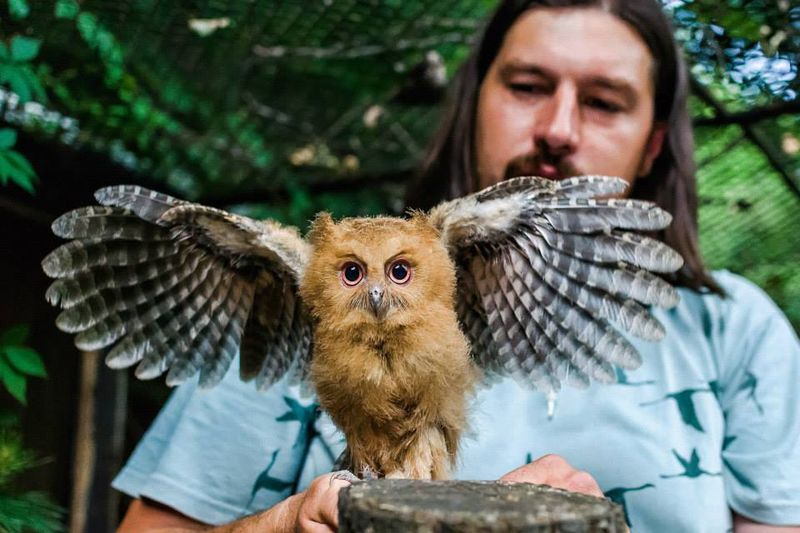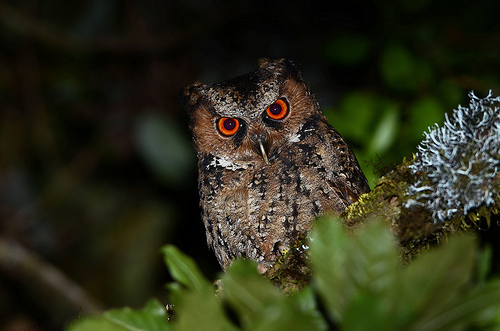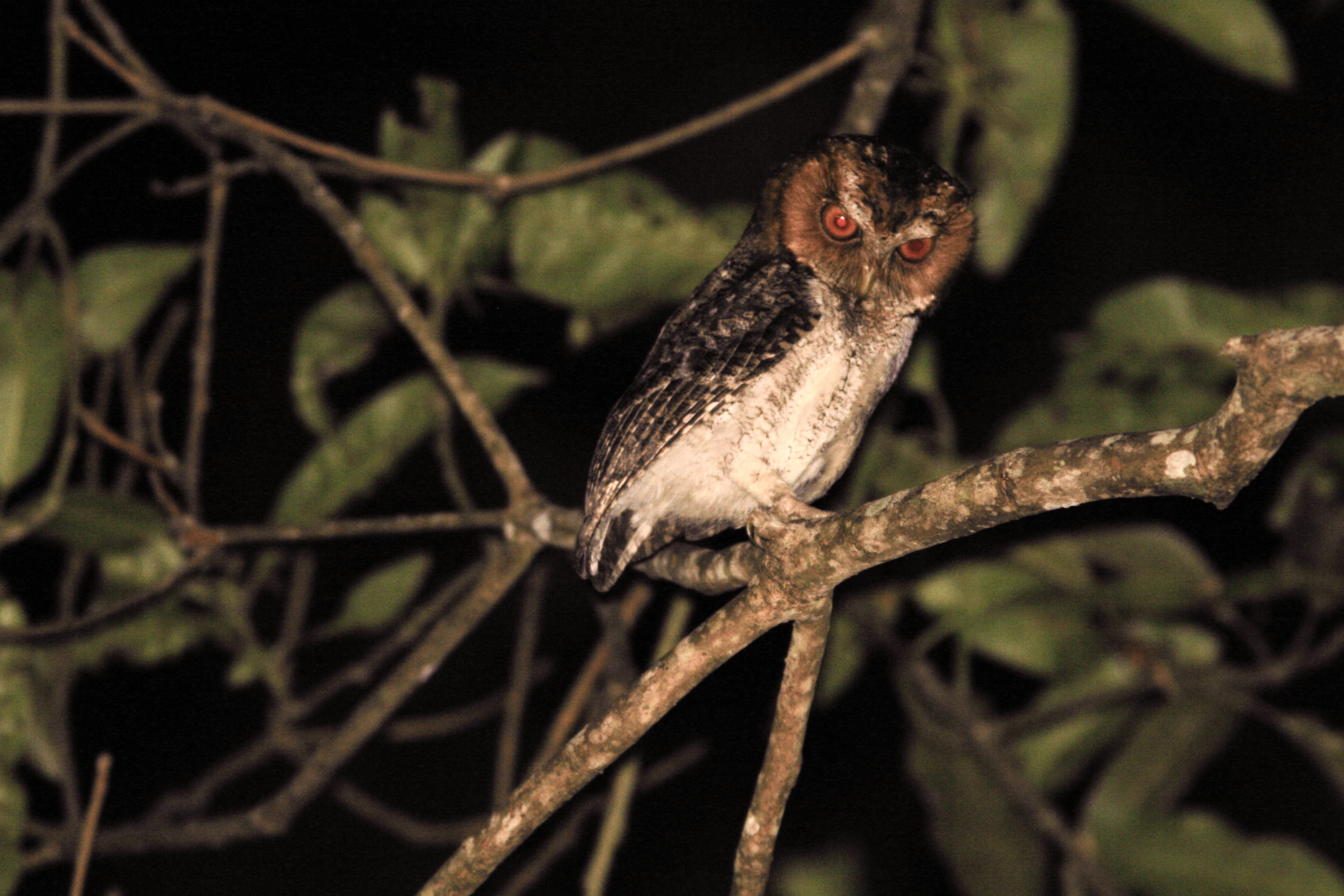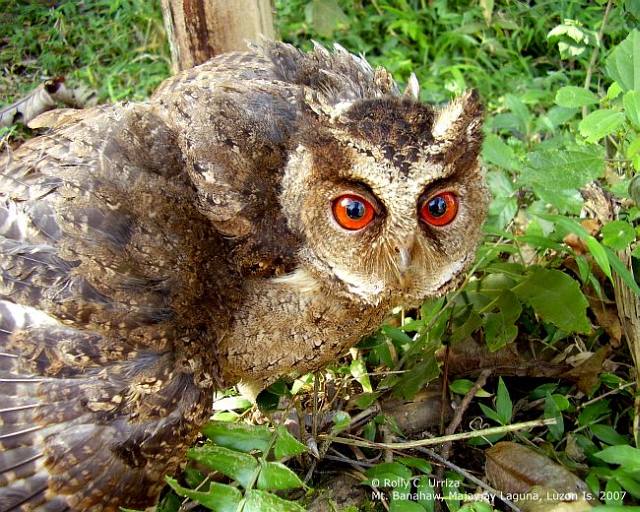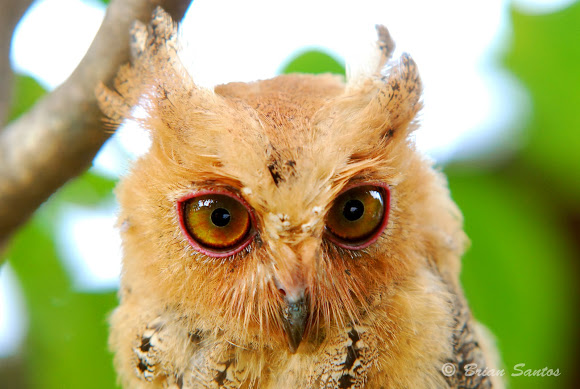Philippine Scops Owl: The Skull Crusher
The Philippine scops owl (Otus megalotis) hangs out in the forests of the Philippines. They stand around 20 cm tall and have distinctive sticky-up ears, as is the fashion amongst the 45+ types of scops owl worldwide.
The striking red/orange ring around the Philippine scops owl’s eyes gives them a piercing, otherworldly air. A little bit wizardly. These solitary owls blend miraculously into the bark of their terrain, generally preferring to hang around with older trees rather than new.
Despite their appealing looks, the Philippine scops-owl is an able killer. Like most other owls, their hearing is incredible and they can pinpoint a mouse rustling on the ground from their perch high in the trees.
Owls in general have one ear slightly lower than the other to help enhance the stereo effect of the scampering sounds from the prey below them. They also use the shape of their facial disc to help deflect the smallest of noises into their ears.
Owls can fly almost silently, so if you were a small rodent in the pitch black forest you would hear and see nothing before you felt the cold hard beak of a scops owl pressing down on your bonce.
It’s the specially designed feathers of an owl that creates this impressive silence. Owl’s primary feathers are serrated so that turbulence is broken down into smaller microturbulence. As these small disturbances reach the edges of the wing they are further broken down by a flexible fringe at the wing’s trailing edge.
Any remaining wing noise (particularly of higher frequencies) is absorbed by the soft feathers on the owl’s legs and body. Scientists have observed that the noise reducing capability of their serrated wings is most effective when the wing is at a steeper angle – i.e. when the owl is lunging in for the attack. They’re a sinister and perfectly designed night hunter.
Philippine scops owls mostly eat insects and small mammals and use a brutal eating technique; they kill their prey by crushing its skull, then they crush every other bone in the animal’s body. According to one expert, young Philippine scops owls often suffocate to death after attempting to eat something a bit too large for them.
Thankfully, the Philipine scops owl is classified by the IUCN as “least concern” because it has a huge breeding ground and seems to be doing fairly well for itself.
All in all, owls are pretty cool. More owl stuff here:
INCREDIBLE FOOTAGE OF TRANSFORMER OWL
FOOTBALLER KICKS OWL TO DEATH

